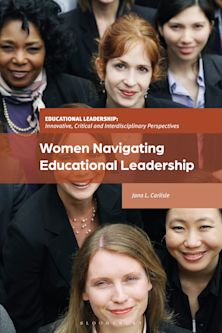- Home
- ACADEMIC
- Education
- Leadership and Management
- Overcoming the Educational Resource Equity Gap
Overcoming the Educational Resource Equity Gap
A Close Look at Distributing a School’s Financial and Human Resources
Overcoming the Educational Resource Equity Gap
A Close Look at Distributing a School’s Financial and Human Resources
This product is usually dispatched within 2-4 weeks
- Delivery and returns info
-
Flat rate of $10.00 for shipping anywhere in Australia
You must sign in to add this item to your wishlist. Please sign in or create an account
Description
State school finance formula cause funding inadequacy, allocative inefficiency, and educational resource equity gaps. Legislative and court-ordered remedies have failed to solve the disparities among schools and districts. This book’s ground-breaking innovation shows how toshift the public education finance paradigm to fund K-12 public education properly, fully, and equitably by eliminating the duplicative and unnecessary layer of county government nationwide and repurposing those tax dollars while implementing economies of scale to achieve allocative efficiency.
Table of Contents
Section I: Overview
Mission — Stephen V. CoffinValue Proposition — Stephen V. CoffinSection II: Constitutional Requirements
Lest There Be Any Doubt: Constitutional Sovereignty as the Basis for Education Reform in Kentucky — William E. Thro State School Funding Formula-based Inequities — Stephen V. Coffin Section III: Inequities in Human Resources
Teachers: Adopting a Culturally Grounded Asset-Based Mindset — Corinne BrionCulturally Proficient Professional Development — Corinne Brion Special Education — Keith Dewey and Stephen V. Coffin Resource Inequities among Deaf and Hard-of-Hearing Students — Thomas BargerSection IV: Inequities in Crucial Services
Early Childhood Education — Karin GarverSchool-based Healthcare Services — Camille A. Clare and Tanya O. RogoConsumer Education for Attaining Life Goals — Luke GreeleySection V: Innovation
Combatting Diseconomies of Scale — Stephen V. CoffinGaining Public Support for Public Funding of Public Education — Stephen V. CoffinAchieving Economies of Scale and Building Fiscal Capacity in Large School Districts — Stephen V. CoffinK-12 N.A.P.R.Holistic Budgeting Model — Stephen V. CoffinSection VI: Conclusion
Rescue Plan — Stephen V. CoffinRedlining Education — Stephen V. CoffinAchieving Educational Resource Equity — Stephen V. Coffin
Product details
| Published | 27 Feb 2023 |
|---|---|
| Format | Hardback |
| Edition | 1st |
| Extent | 278 |
| ISBN | 9781475862454 |
| Imprint | Rowman & Littlefield Publishers |
| Dimensions | 231 x 161 mm |
| Publisher | Bloomsbury Publishing |
About the contributors
Reviews
-
Dr. Coffin has written the definitive book on K-12 equitable resource allocation, funding, budgeting, governance, and operational excellence for the twenty-first century. Overcoming the Educational Resource Equity Gap is a prescient read that informs schools and districts how to achieve equal educational opportunity, allocative efficiency, economies of scale, resource equity, and financial stability as well as sustainability amid the epic COVID pandemic, social justice crises, climate change existential threats, economic upheaval, and increasingly scarce resources.
A hands-on approach to achieving educational resource equity for readers ranging from those entering the field to those well-versed in the field, Overcoming the Educational Resource Equity Gap provides solutions for all stakeholders. In addition, Dr. Coffin’s holistic budgeting model can prevent financial exigency, allocative inequities, and inefficiency while enabling schools and districts not only to achieve financial sustainability but also educational as well as operational excellence.
An extremely well-written, researched, documented, and organized volume, with contributions from leading academicians, practitioners, and policy makers in the world of educational equity, finance, economics, and operations, this book will be an invaluable asset for educators, administrators, policy makers, researchers, and practitioners, as well as those who are interested in devising systems of equal opportunity, allocative efficiency, economies of scale, resource equity, and financial sustainability to best serve all of America’s students regardless of where or how they attend school.Bruce S. Cooper, PhD, emeritus professor and vice chair, Division of Administration, Policy and Urban Education, Fordham University



































